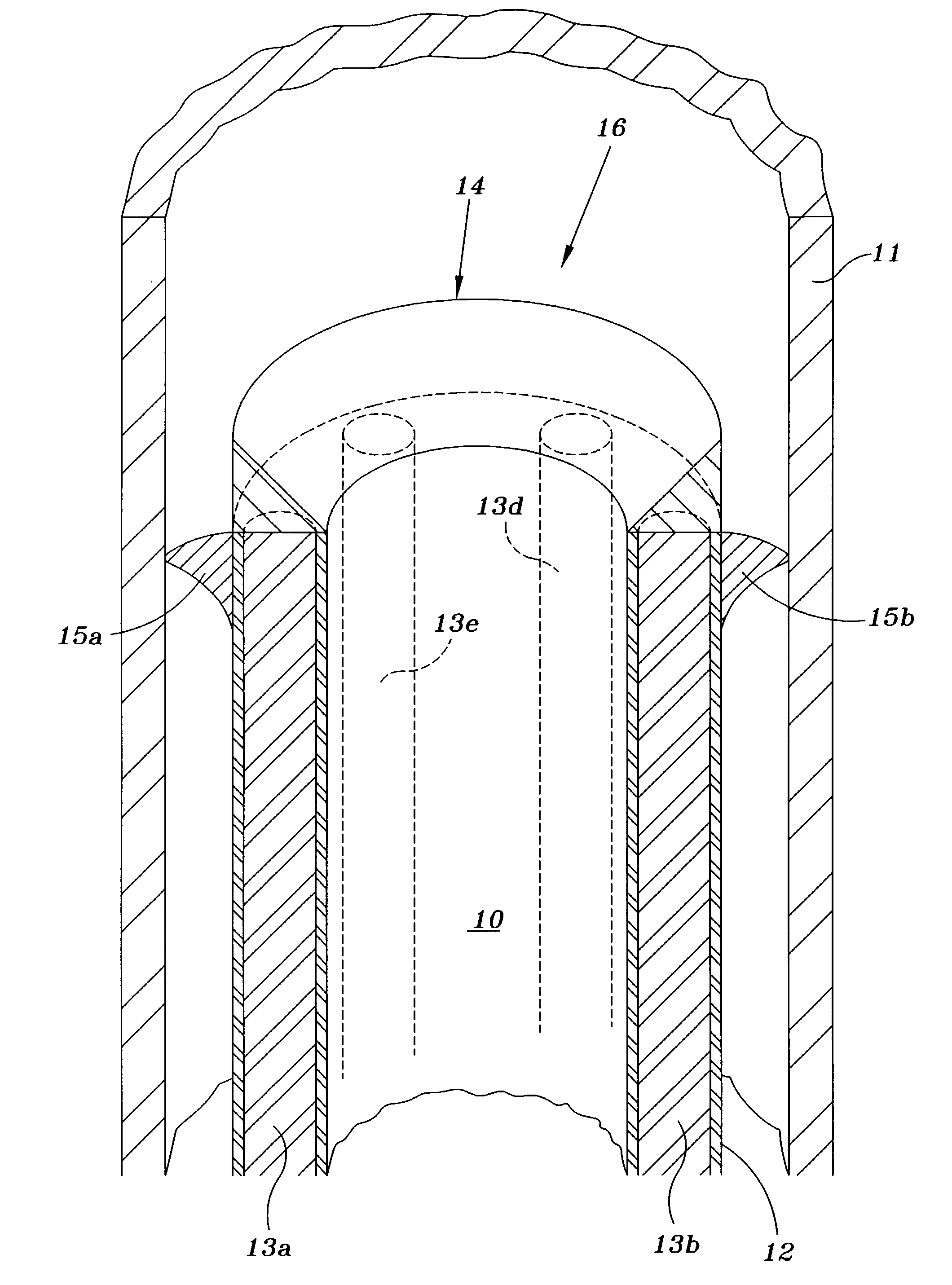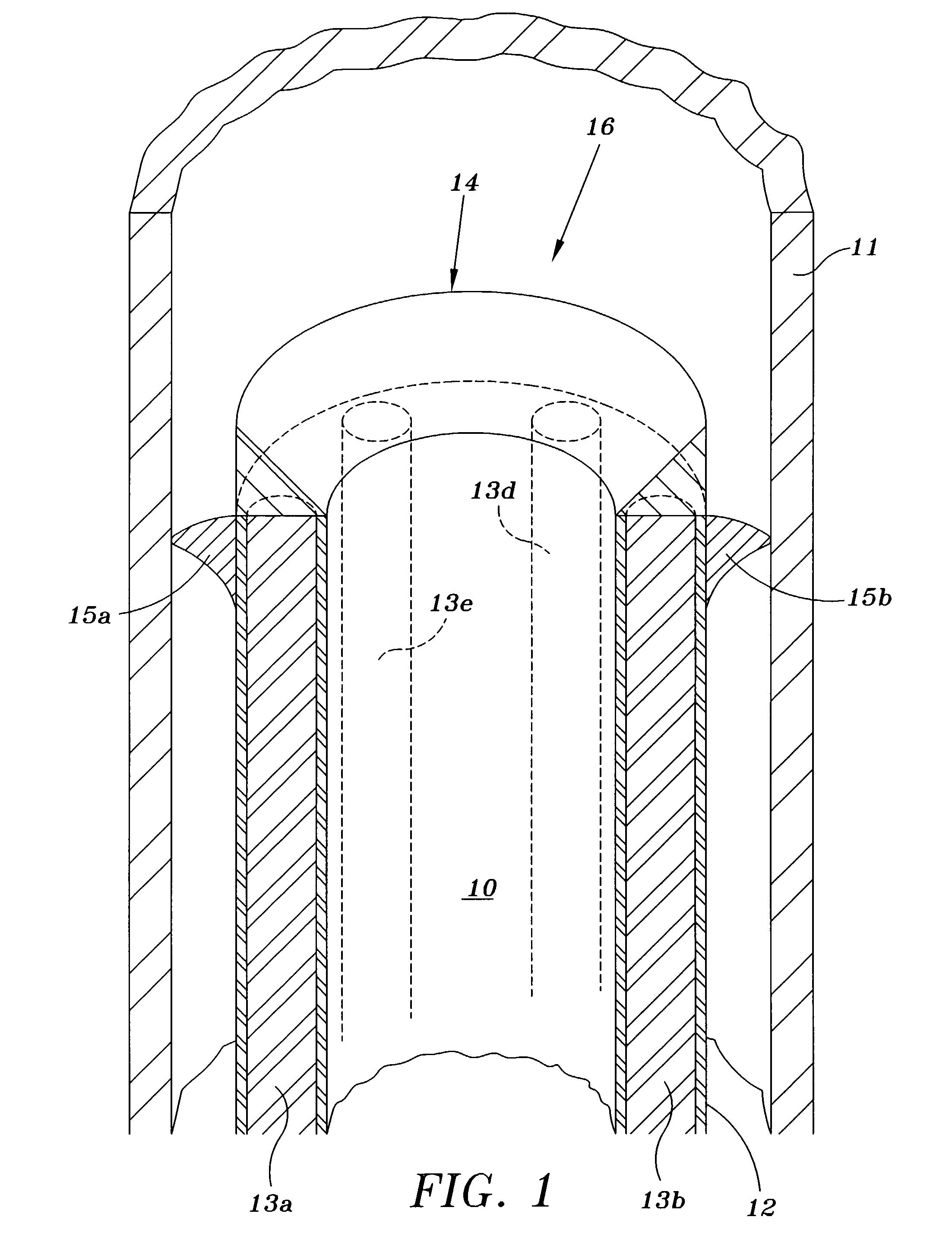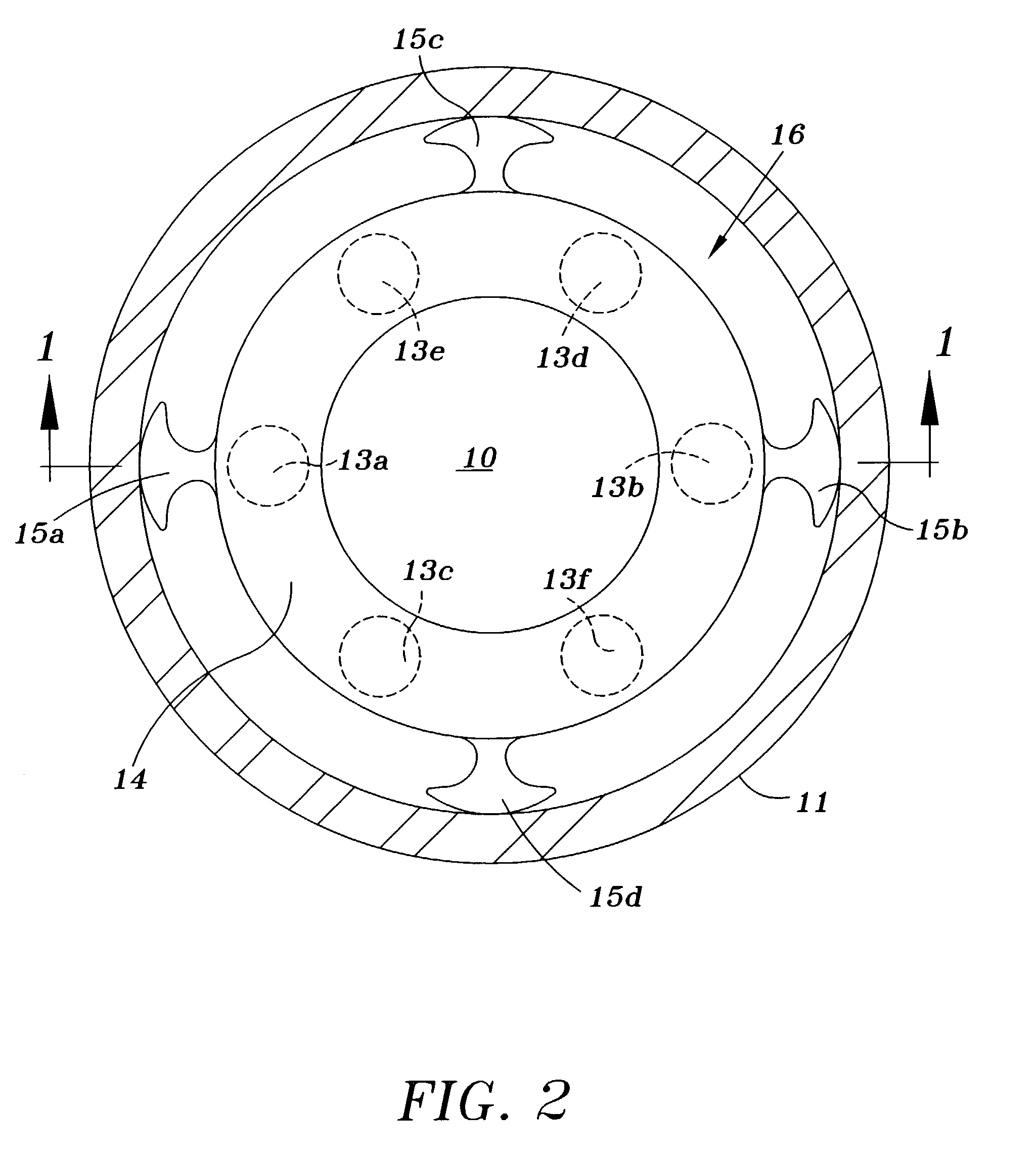Catherization system and method
a technology of catherization system and optical fiber, applied in the field of catherization system, can solve the problems of system failure, insufficient filter to catch all debris which may flow downstream, and insufficient procedure to remove substantial amounts of blockag
- Summary
- Abstract
- Description
- Claims
- Application Information
AI Technical Summary
Benefits of technology
Problems solved by technology
Method used
Image
Examples
first embodiment
[0025]The hollow cylindrical tube 10 with outer Teflon coating 12; IR optical fibers 13a, 13b, 13d, and 13e; metal clad tip ring 14, and arterial guards 15a and 15b comprise the catherization system of the present invention.
[0026]The hollow cylindrical tube 10 with arterial guards 15a and 15b, and with pneumatically sealed IR optical fibers 13a, 13b, 13d, and 13e, may be commercially formed of a flexible polyvinal chloride (DEHP) type of plastic by any of numerous plastic product manufacturers such as PLAS-LABS of Lansing, Mich. The metal clad tip ring 14 is preferably gold, and may be manufactured commercially by any of numerous metallurgists including those generally used by hospitals.
[0027]In operation, dye is inserted into the artery 11 to pinpoint the exact location of artery blockage by X-ray. The catherization system generally referred to by reference number 16 thereafter is inserted into the artery 11, and the metal clad tip ring 14 is pushed against the artery blockage to b...
third embodiment
[0031]FIG. 4 illustrates the invention as used in conjunction with a stent. The catherization system 20 differs from the catherization system 16 of FIG. 1 only by the absence of arterial guards and Teflon coating 12, and the design of the metal clad tip ring 22. Referring to FIG. 4, a stent 21 is first inserted into the artery 11 to abut any arterial blockage previously found by use of an X-ray dye. IR optical fibers as represented by reference numbers 13a and 13b are shown to be pneumatically sealed between the inner and outer walls of the hollow cylindrical tube 10, and extend the longitudinal length of the tube to abut the lower surface of the metal clad tip ring 22. In operation, the stent 21 is pressed against the inner walls of the artery 11 through use of a water filled balloon internal to the stent. Thereafter, the catherization system 20 is advanced into the stent 21 to abut the artery blockage. A vacuum is then created within the inner walls of the hollow cylindrical tube ...
PUM
 Login to View More
Login to View More Abstract
Description
Claims
Application Information
 Login to View More
Login to View More - R&D
- Intellectual Property
- Life Sciences
- Materials
- Tech Scout
- Unparalleled Data Quality
- Higher Quality Content
- 60% Fewer Hallucinations
Browse by: Latest US Patents, China's latest patents, Technical Efficacy Thesaurus, Application Domain, Technology Topic, Popular Technical Reports.
© 2025 PatSnap. All rights reserved.Legal|Privacy policy|Modern Slavery Act Transparency Statement|Sitemap|About US| Contact US: help@patsnap.com



